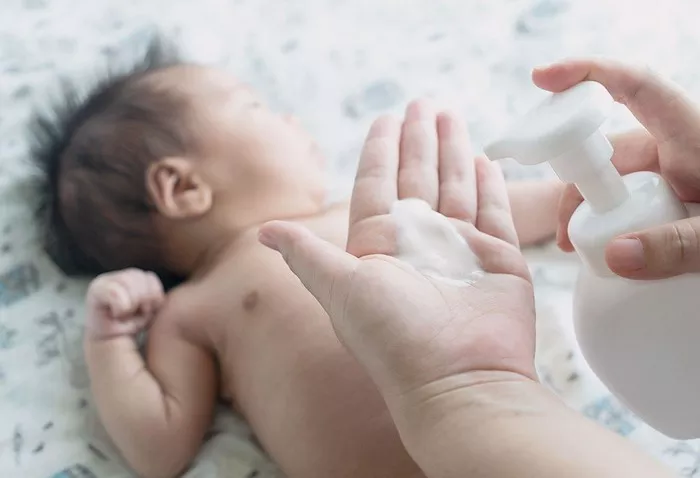Newborn care involves numerous routines, and bathing is one of the most important. For the first few weeks of life, sponge bathing is a common practice. It ensures that the baby stays clean without submerging them in water. Understanding how often to sponge bathe a newborn can help parents establish a healthy hygiene routine while considering the baby’s sensitive skin and health needs. This article provides detailed guidance on the frequency of sponge bathing a newborn and offers tips for making bath time safe and enjoyable.
Understanding Sponge Bathing
What is Sponge Bathing?
Sponge bathing involves gently cleaning a baby with a damp washcloth or sponge. This method is typically used before the umbilical cord stump falls off and the baby’s navel heals. It is a gentle way to keep the baby clean without immersing them in water.
Why Sponge Bath a Newborn?
Newborns have delicate skin that requires special care. Sponge bathing helps to avoid any risk of infection in the umbilical area and minimizes the chance of overwhelming a very young baby with water. It also allows parents to clean the baby effectively while ensuring their safety and comfort.
Frequency of Sponge Bathing
Bathing Frequency Recommendations
For the first few weeks, sponge bathing is usually recommended about two to three times a week. This frequency helps keep the baby clean without over-drying their sensitive skin. Newborns do not get very dirty, so excessive bathing can strip their skin of natural oils.
Overbathing can lead to dry skin or rashes, so it is important to find a balance. A regular schedule of sponge bathing, combined with wiping the baby’s face and neck with a damp washcloth as needed, should suffice for maintaining cleanliness.
Adjusting Based on Need
While two to three times a week is a general guideline, the actual frequency may vary based on individual circumstances. If the baby gets particularly dirty, such as after a feed or a diaper leak, an additional sponge bath or clean-up might be necessary.
Pay attention to your baby’s skin and overall cleanliness. If the baby’s skin appears particularly soiled or has a strong odor, it might be time for an extra bath. Always ensure that the extra bath does not disrupt the balance of natural oils on the baby’s skin.
Steps for Sponge Bathing
Prepare the Bathing Area
Choose a warm, comfortable location for sponge bathing. Gather all necessary supplies, including a soft washcloth, a gentle baby soap, and a towel. Ensure the room is warm to prevent the baby from getting cold during the bath.
Fill a Basin with Warm Water
Fill a small basin or sink with lukewarm water. Test the water temperature with your wrist or elbow to ensure it is not too hot or too cold. The ideal temperature is around 100°F (37°C).
Clean the Baby Gently
Start by undressing the baby and wrapping them in a towel, leaving only their head exposed. Dip the washcloth in the warm water, wring it out, and gently clean the baby’s face. Move on to the neck, arms, and legs, ensuring you get into all the creases and folds.
Be cautious around the umbilical cord stump. Use a damp cloth to gently clean the area without soaking it. After the stump falls off, you can bathe the baby more thoroughly.
Dry the Baby Thoroughly
After the sponge bath, wrap the baby in a clean, dry towel. Pat their skin gently to dry, especially in creases and folds where moisture can accumulate. Avoid rubbing the skin, as it can be sensitive.
Tips for Safe Sponge Bathing
Avoid Overuse of Soap
Use a mild, fragrance-free baby soap sparingly. Overuse of soap can dry out the baby’s skin. For most sponge baths, a plain damp washcloth will suffice.
Monitor the Baby’s Comfort
Always keep a close eye on your baby’s comfort during the bath. Ensure the room is warm and that the baby is not exposed to drafts. If the baby seems uncomfortable or fussy, finish the bath quickly and wrap them in a warm towel.
Check for Skin Reactions
Regularly check your baby’s skin for any signs of dryness, rash, or irritation. If you notice any adverse reactions, adjust the frequency of bathing or the products used. Consult your pediatrician if you have concerns about skin issues.
Transitioning to Regular Baths
When to Start Regular Baths
Once the umbilical cord stump has fallen off and the navel area has healed, you can begin giving your baby regular baths in a baby tub. At this point, you can transition from sponge bathing to more frequent full baths, typically two to three times a week.
Gradual Changes
Gradually increase the frequency of baths as the baby grows and their skin becomes less sensitive. Pay attention to your baby’s reaction to full baths and adjust the routine based on their comfort and cleanliness needs.
See also: Can I Leave My Newborn Alone While I Shower? – A Parent’s Guide to Safe Bath Time
Conclusion
Sponge bathing is a gentle and effective way to keep a newborn clean during the early weeks of life. Following the recommended frequency of two to three times a week helps maintain the baby’s delicate skin while preventing over-drying and irritation. By preparing the bathing area properly, using gentle products, and monitoring the baby’s comfort, parents can ensure a positive and safe bathing experience. As the baby grows and their skin changes, transitioning to regular baths will support their continued health and hygiene.


